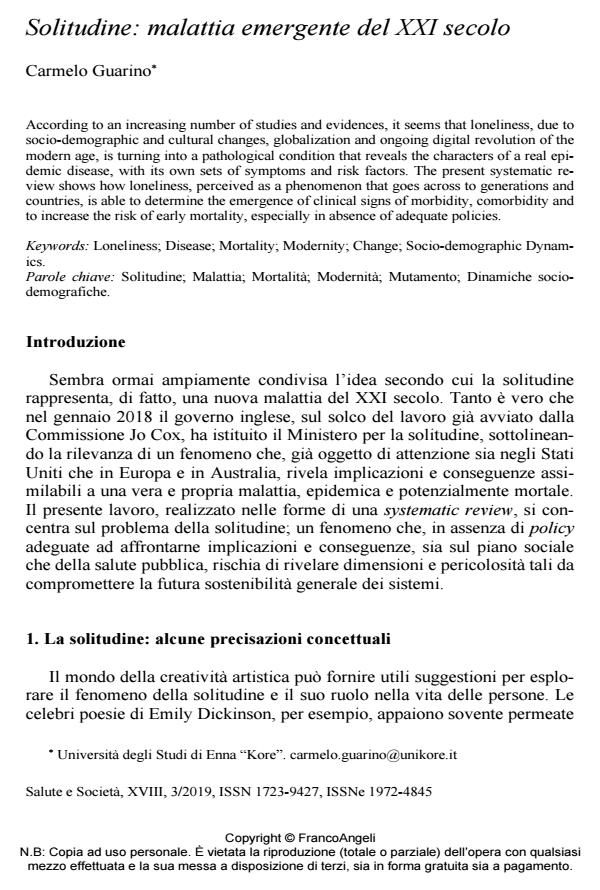Solitudine: malattia emergente del XXI secolo
Titolo Rivista SALUTE E SOCIETÀ
Autori/Curatori Carmelo Guarino
Anno di pubblicazione 2019 Fascicolo 2019/3
Lingua Italiano Numero pagine 15 P. 146-160 Dimensione file 177 KB
DOI 10.3280/SES2019-003013
Il DOI è il codice a barre della proprietà intellettuale: per saperne di più
clicca qui
Qui sotto puoi vedere in anteprima la prima pagina di questo articolo.
Se questo articolo ti interessa, lo puoi acquistare (e scaricare in formato pdf) seguendo le facili indicazioni per acquistare il download credit. Acquista Download Credits per scaricare questo Articolo in formato PDF

FrancoAngeli è membro della Publishers International Linking Association, Inc (PILA)associazione indipendente e non profit per facilitare (attraverso i servizi tecnologici implementati da CrossRef.org) l’accesso degli studiosi ai contenuti digitali nelle pubblicazioni professionali e scientifiche
According to an increasing number of studies and evidences, it seems that loneliness, due to socio-demographic and cultural changes, globalization and ongoing digital revolution of the modern age, is turning into a pathological condition that reveals the characters of a real epi-demic disease, with its own sets of symptoms and risk factors. The present systematic review shows how loneliness, perceived as a phenomenon that goes across to generations and coun-tries, is able to determine the emergence of clinical signs of morbidity, comorbidity and to in-crease the risk of early mortality, especially in absence of adequate policies.
Parole chiave:Solitudine; Malattia; Mortalità; Modernità; Mutamento; Dinamiche socio-demografiche.
Carmelo Guarino, Solitudine: malattia emergente del XXI secolo in "SALUTE E SOCIETÀ" 3/2019, pp 146-160, DOI: 10.3280/SES2019-003013